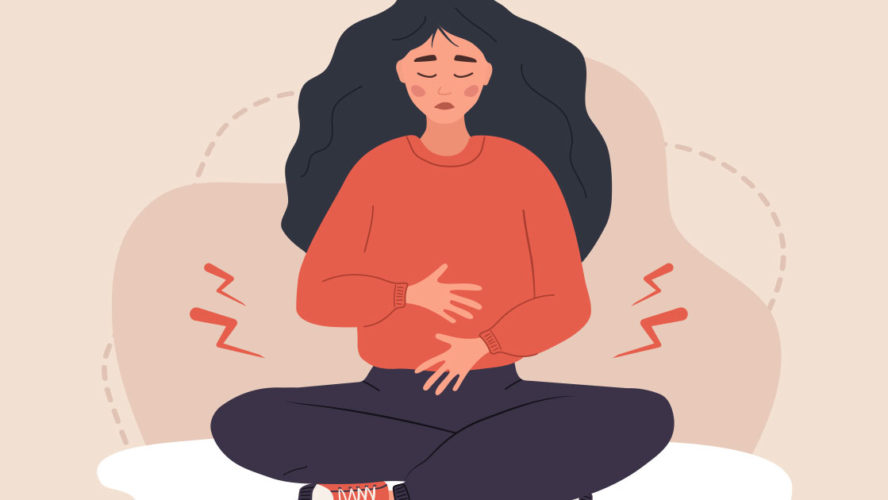
Jared Robins
Executive Director, American Society for Reproductive Medicine
What is endometriosis?
During a normal menstrual cycle, the lining of the uterus develops into a thick tissue bed in anticipation of a pregnancy implanting. This growth and development are caused by the production of estrogen, a hormone that is made in the first half of the cycle. After ovulation, when the egg is released, the hormone progesterone is produced. If implantation does not occur, the loss of estrogen and progesterone causes the uterine lining to shed, and the resulting blood and tissue is the menses.
The uterine lining is called the endometrium. In the disease endometriosis, the uterine lining is found on organs outside of the uterus. The most common places for the tissue to be found are the ovaries, the fallopian tubes, and the wall of the pelvis. This extrauterine tissue is responsive to hormones similarly to the normal uterine lining. Therefore, the tissue grows on the organs each month and, if pregnancy does not occur, can cause a small amount of bleeding in the patient’s abdominal cavity. Blood in the abdomen causes a lot of inflammation, which in turn can cause some of the symptoms commonly attributed to endometriosis, including pain in the abdomen or back, nausea, and bloating. Initially, these symptoms are cyclic, occurring immediately before or during menses. However, as the inflammation continues to occur, scar tissue may form in the abdomen and pelvis causing the pain to occur more frequently or, sometimes, occur constantly. Because of this, endometriosis can be a chronic and debilitating disease.
What causes endometriosis?
There are several theories about the cause for endometriosis and the exact cause may differ from patient to patient. Possible causes include implantation of menstrual tissue that enters the abdominal/pelvic cavity through the fallopian tubes during menstruation (retrograde menstrual), implantation of menstrual tissue that enters the blood or lymphatic systems, or spontaneous formation of endometrial tissue from stem cells in the body. As stated earlier, since most endometrial implants occur around the fallopian tubes and ovaries, retrograde menstrual is thought to be the most likely cause of endometriosis for most patients. This theory is supported by the fact that patients with a blockage in the cervix or vagina are more likely to have retrograde menstruation and are at high risk of developing endometriosis. However, some degree of retrograde menstruation is seen in most patients with normal menstruation, and not all of these patients develop endometriosis. Therefore, there is likely to be a genetic predisposition for getting endometriosis.
In a very small number of patients, endometriosis can be seen in places outside of the abdominal cavity such as the lungs or the brain. In fact, genetic men who do not normally have any endometrial tissue can be diagnosed with endometriosis. These cases can be explained by either spread of the endometrial tissue or the formation of endometriosis from stem cells that go awry. These types of endometrioses are extremely rare.
Treatment
The goal of endometriosis treatment is to eliminate the symptoms that it is causing. This can be achieved by medical or surgical techniques. Endometrial tissue is responsive to hormones like estrogen; therefore, the medical treatment of endometriosis is primarily through the use of drugs that reduce the amount or effectiveness of estrogen in the body. Side effects of these medications are associated with low estrogen levels and can include hot flashes, sleeping difficulty, and vaginal dryness. There are several new medications available, and the side effect profile of these medications are constantly improving. While these medications are excellent at treating endometrial implants, they do not impact scar tissue that may be causing pain. Therefore, surgery is often necessary for endometriosis patients. The goal of surgery is to remove the scar tissue and the endometrial implants. While surgery is highly effective at treating endometriosis, the implants will often come back. Therefore, a combination of surgical and medical treatment is recommended for many patients.
Does endometriosis cause infertility?
While not all patients with endometriosis have infertility, there is a high likelihood that fertility will be a challenge. The scar tissue from endometriosis can affect the fallopian tubes and restrict them from allowing the egg to become fertilized and enter the uterus. It should be noted that the fallopian tubes are dynamic organs and need to be able to move and constrict. Therefore, scar tissue can impact the fallopian tubes even when testing shows that the tubes are open. The inflammation from endometriosis may also be associated with infertility even when the tubes are unaffected.
If the fallopian tubes are impacted by scar tissue, surgical removal of the scar tissue can improve the probability of pregnancy. Similarly, surgical removal of endometrial implants will reduce the amount of inflammation and improve pregnancy rates. However, studies have demonstrated that most effective way to improve pregnancy rates in patients with endometriosis is by using in vitro fertilization (IVF). During IVF, eggs are removed from the ovaries, fertilized in the laboratory to make embryos, and embryos are replaced in the uterine cavity. IVF is effective for endometriosis because the eggs are removed before they are exposed to the inflammatory cells and because the fallopian tubes are bypassed. Sometimes, patients will be medically treated for endometriosis for several months before an IVF cycle to further reduce the amount of inflammation.
In summary, endometriosis is a chronic disease that, if left untreated, can cause significant long-term complications. Patients that have cyclic menstrual pain should discuss this with their healthcare provider. Patients trying to get pregnant that have a diagnosis of endometriosis should attempt to get pregnant naturally. However, if they are not pregnant after 6-12 months of trying, they should seek the care of an infertility specialist. More information about endometriosis can be found on the ASRM’s patient information website at www.reproductivefacts.org.



